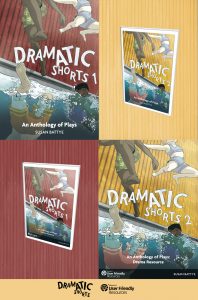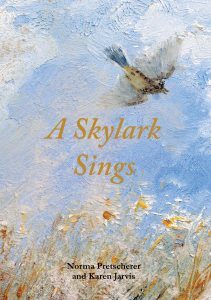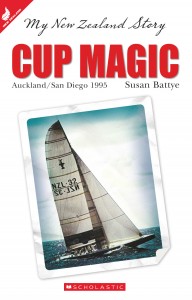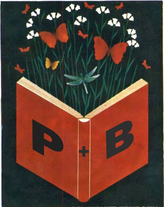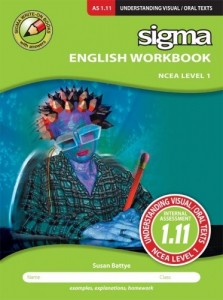By Susan Battye
Imagine a school system where students are engaged in learning most of the time because of one thing – a philosophical change from a rigid approach to subject delivery to one where self-expression and creativity through the arts underpins all aspects of the curriculum.
This school system is one that most New Zealand baby boomers are familiar with. It’s a system where the more Drama you engage in with your students, the fewer hassles you are likely to have in the classroom!
Now the subject of a documentary; The heART of the Matter made by Luit and Jan Bieringa, promises to be a favourite in the 2016 New Zealand International Film Festival. If it’s not been scheduled to screen in your town; request it!
Hats off to producer, Jan Bieringa who says, “New Zealand needs a strong story that challenges the notion of the arts as a ‘frill’ in the educational process. Not arts or science – but both taught creatively for our children, students of all cultures, and the public at large to enhance and partake of the challenging future.”
The film traces the significant changes that took place after World War II in the New Zealand education system under the leadership of the then director-general of education, Clarence Beeby (1940-1960).
That is when the rote-learning environment of Depression and pre-war New Zealand schools was banished to the dustbin of history. In its place arrived the student centred, integrated learning environment that we are familiar with today.
Beeby believed that, “Every person whatever his ability, whether be rich or poor, whether he live in town or country, has a right as a citizen to a free education, of the kind for which he is best fitted and to the fullest extent of his power…”
Beeby‘s vision was to provide students with access to a thoroughly bicultural, arts-centred education system. Supported by Peter Fraser, the far sighted Prime Minister and Minister of Education of the day, Beeby brought together a remarkable team of visual art, dance, drama, music and physical education specialists.
Hundreds of artists in the third year of their teacher training at the Dunedin College of Education were co-opted to work, under the leadership of the Head of Arts and Crafts, Gordon Tovey, with regular classroom teachers in their own classroom. The aim was to promote confidence in the teachers to deliver an arts programme based on knowledge of the subject matter and teaching methodology.
There was a strong Māori focus to the Beeby arts programme. Contributing art specialists included Cliff Whiting, Para Matchitt, and Ralph Hotere. According to the film’s director, Luit Bieringa Māori art such as kōwhaiwhai, kapa haka and waiata gained a central place in our mainstream classrooms through in-depth consultation with Ngāti Porou kaumātua Pine Taiapa. Te Ataarangi language programme founder, Kātarina Mataira also provided a focus on valuing the Māori language as part of this programme.
Driving this movement to promote the integration of music, art, movement and drama into the wider curriculum, was a commitment to do the right thing by the post war baby boomers. Parents wanted something better for their children than the hierarchical, lack lustre educational environment they had experienced.
Gone were barren classroom walls, devoid of any evidence of student work and in their place arrived the colourful enlivened classrooms New Zealand children and their parents have since come to expect as the norm.
In the course of researching the film, Luit Bieringa discovered that Beeby recognised the fact that the regular classroom teachers could not be expected to be specialists in the arts. Needless to say for many years the teachers welcomed the artist-educators with open arms into their classrooms.
The demise of this artist–educator specialist intervention system that took place in the mid-seventies and early eighties, was deeply regretted by many classroom teachers. The film captures these viewpoints and shows artists at work with students.
In an interview with Radio New Zealand, Luit Bieringa commented that the first thing Gordon Tovey did when he entered a school was to talk to students rather than the teachers. Students were undoubtedly at the centre of the work. In this film Bieringa poses the question, “What have we lost by not paying attention to this system?”
What indeed?
If one was to cast a modern day ‘Key Competencies’ lens over the classroom work depicted in the film, we would no doubt be able to find successful learners who look like they are, “making use of the competencies in combination with all the other resources available to them.”
Buy Soma Online Overnight The heART of the Matter showcases learners who appear to be able to, “articulate personal goals, relate to other people, share community knowledge and values, use cultural tools (language, symbols, and texts), and knowledge and skills found in different learning areas.”
Learners are seen to be, “taking up opportunities to work together in social contexts to achieve an arts related end and making “these practices part of their own identity and expertise.”
Learners are ‘Thinking’. In other words they are seen to be “using creative, critical, and metacognitive processes to make sense of information, experiences, and ideas”, and actively problem-solving. They are also seen to use Language, Symbols, and Texts in order to “make meaning of the codes in which knowledge is expressed.”
In terms of the ‘Managing Self’ Key Competency we can find examples in the film where the students appear to, “demonstrate a “can-do” attitude, as capable learners.” With regards to ‘Relating to Others’ they are seen to be “interacting effectively with a diverse range of people in a variety of contexts; actively listening, recognising different points of view, negotiating, and sharing ideas.”
In terms of ‘Participating and Contributing’ the learners are seen in the film to “contribute appropriately as a group member, to make connections with others, and to create opportunities for others in the group.”
In fact the methodology on offer, as depicted in the film, appears to tick the desired Key Competency boxes of the New Zealand Curriculum. So why was this Professional Development baby thrown out with the bathwater in the eighties? Short answer: David Lange’s self-governing Tomorrow’s Schools programme.
Today the support once offered to the arts teacher as a matter of course via a visiting subject expert is hard to find. The professional development model has changed considerably.
Teachers today are increasingly expected to ‘get it off the net’ or attend sporadic assessment focussed workshops that may or may not cater to their needs. The lucky few will make it to workshops offered by subject associations such as Drama New Zealand and increase their knowledge not only of assessment methodology but equally importantly of the subject itself.
As a young teacher, fresh from the Christchurch College of Education on the West Coast in 1974, I was lucky to be supported by Christchurch College of Education Drama in Education lecturer, Don McAra and the national Curriculum Officer for Drama, Sunny Amey. She famously visited my Greymouth High School classroom and encouraged me to study for a post graduate Diploma in Drama in Education with Dorothy Heathcote in England.
I can see now that Amey and McAra were both deeply imbued with the Beeby philosophy. Both were artist-educators in their own right and that mattered a great deal to me because as Luit Bieringa in his Radio New Zealand interview, they could “walk the talk”.
The expectation was that I would return to New Zealand and continue to foster this model of teacher support for the arts in general and drama in education in particular. And so I did. I am in no doubt that if it wasn’t for the role modeling I had from these artist-educators and the commitment they made to me as a teacher, that I would have found it difficult to sustain my practice on a daily basis.
I believe that the advent of the Bieringa documentary will strike a chord with many New Zealanders to take up the cry, “What have we lost by not paying attention to this system?”
References:
New Zealand International Film Festival 2016 http://www.nziff.co.nz/2016/auckland/
New Zealand Curriculum http://nzcurriculum.tki.org.nz/The-New-Zealand-Curriculum
Radio New Zealand http://www.radionz.co.nz/national/programmes/artsonsunday/audio/2002534/luit-bieringa
For further information on the availability of The heART of the Matter for screeenings contact Jan Bieranga email jan@bwx.co.nz
More Drama Less Hassle was first published in Tomorrows Schools Today emagazine in July 2016
The heArt of the Matter DVD is now available from Jan Bieranga email jan@bwx.co.nz
THOTM_DVD sleeve V3
